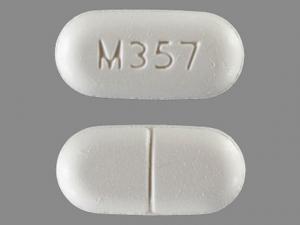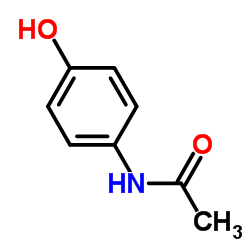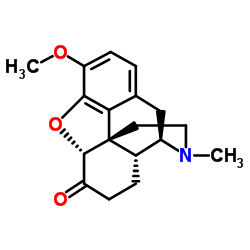Contents
- What is M357 white pill?
- Active ingredients of M357 white pill and their identification
- M357 white pill chemistry
- M357 white pill uses
- M357 white pill legal status
- What are different brand names for hydrocodone/acetaminophen?
- M357 white pill mechanism of action
- M357 white pill side effects
- Can M357 white pill cause dependence?
- M357 white pill pharmacokinetics
- How long M357 white pill stays in the system?
What is M357 white pill?
M357 is an imprint on a pill identified as white in an elliptical/oval shape. Pill is a combination of two active ingredients acetaminophen 500mg and hydrocodone bitartrate 5 mg. It is used to relieve moderate to severe pain. M357 while pill contains an opioid (narcotic) pain reliever hydrocodone in the dose of 5 mg and a non-opioid pain reliever acetaminophen in the dose of 500mg. It is supplied by Mallinckrodt Pharmaceuticals.

- Imprint: M357
- Strength: 500 mg / 5 mg
- Color: White
- Size: 17.00 mm
- Shape: Elliptical / Oval
- Availability: Prescription only
- Drug Class: Narcotic analgesic combinations
- Pregnancy Category: C – Risk cannot be ruled out
- CSA Schedule: 2 – High potential for abuse
- Labeler / Supplier: Mallinckrodt Pharmaceuticals
- Inactive Ingredients: crospovidone, magnesium stearate, microcrystalline cellulose, povidone, corn starch, silicon dioxide, stearic acid
Active ingredients of M357 white pill and their identification
Hydrocodone belongs to the pharmacological class of opioid analgesic and occurs as fine, white crystals or as a crystalline powder.
Acetaminophen or paracetamol is a white, odorless, slightly bitter crystalline powder. It is pharmacologically categorized as a non-opiate, non-salicylate analgesic and antipyretic.
M357 white pill chemistry
M366 pill is a combination of two active ingredients: acetaminophen and hydrocodone.
Acetaminophen:
IUPAC name: N-(4-hydroxyphenyl)ethanamide
Molecular formula: C8H9NO2
Molecular weight: 151.163 g/mol
Molecular structure:
Drug class: Acetaminophen belongs to the organic class of compounds known as 1-hydroxy-2-unsubstituted benzenoids, which are phenols unsubstituted at the 2-position.
Hydrocodone:
IUPAC name: 4,5α-epoxy-3-methoxy-17-methylmorphinan-6-one
Molecular formula: C18H21NO3
Molecular weight: 299.368 g/mol
Molecular structure:
Drug class: Hydrocodone belongs to the organic class of compounds named morphinans which are polycyclic compounds with a four-ring skeleton with three condensed six-member rings forming a partially hydrogenated phenanthrene moiety, one of which is aromatic while the two others are alicyclic.
M357 white pill uses
Acetaminophen/hydrocodone is used in the treatment of moderate to severe pain including back pain, severe pain and rheumatoid arthritis. It is also used for the symptomatic relief of nonproductive cough, alone or in combination with other antitussives or expectorants.
M357 white pill legal status
Acetaminophen/hydrocodone 500 mg/5 mg is categorized as a Schedule 2 controlled substance under the Controlled Substance Act (CSA). This means that this drug has a high potential for abuse. Abuse of the drug may lead to severe psychological or physical dependence.
What are different brand names for hydrocodone/acetaminophen?
Different brand names for hydrocodone/acetaminophen are: Vicodin, Lorcet, Lortab, Norco, Xodol, Hycet.
M357 white pill mechanism of action
Hydrocodone exhibits its actions in the body as a weak agonist of opiate receptors OP1, OP2, and OP3 within the CNS. This drug primarily affects OP3 receptors coupled with G-protein and function as modulators, both positive and negative, of synaptic transmission via G-proteins that activate effector proteins. After binding to its receptors it stimulates the exchange of GTP for GDP on the G-protein complex.
Effector system is adenylate cyclase and cAMP placed at the inner surface of the plasma membrane. Activation of this effector system decreases intracellular cAMP by inhibiting adenylate cyclase. As a result, neurotransmitters for pain transmision such as dopamine, acetylcholine, substance P, GABA, and noradrenaline release is inhibited.
Hydrocodone may additionally inhibit the release of hormones including vasopressin, somatostatin, insulin,and glucagon. Opioids may also close N-type voltage-operated calcium channels (OP2-receptor agonist) and open calcium-dependent inwardly rectifying potassium channels (OP3 and OP1 receptor agonist), resulting in hyperpolarization and reduced neuronal excitability.
Acetaminophen belongs to the group of weaker analgesics. It is proposed that acetaminophen acts primarily in the CNS by increasing the pain threshold inhibiting both isoforms of enzyme cyclooxygenase, COX-1, COX-2, and COX-3 involved in prostaglandin (PG) synthesis. Differently from other NSAIDs, acetaminophen does not inhibit COX in peripheral tissues and, thus, has no peripheral anti-inflammatory affects.
Additionally, it has been found that acetaminophen may selectively block a variant of the COX enzyme that is different from the known variants COX-1 and COX-2 which is now referred to as COX-3. However, its exact mechanism of action is still poorly understood. Acetaminophen’s antipyretic properties are most likely due to direct effects on the heat-regulating centres of the hypothalamus.
M357 white pill side effects
Acetaminophen/hydrocodone may cause following side effects:
Common side effects:
- Drowsiness
- Dizziness
- Nausea, vomiting
- Constipation
Serious side effects:
- Difficulty with breathing, allergy, and swelling of the face, lips, tongue or hives
- Decreased breathing, bradycardia
- Lightheadedness
- Convulsions
- Feeling anxious, fearful, or depressed; mood swings
- Confusion, unusual thoughts
- Difficulty urinating
- Upper abdominal pain, itching, little appetite, dark urine, clay-colored stools, jaundice
- Skin redness or rash that causes blistering
Can M357 white pill cause dependence?
Hydrocodone may become habit-forming when it is used for a long-time period, causing mental or physical dependence. However, patients with a chronic pain should not let the fear of dependence keep them away from using narcotics to relieve their pain. Mental dependence (addiction) is not likely to occur when hydrocodone is used for this purpose.
Hydrocodone may also provoke physical dependence after long-term use which may lead to withdrawal side effects if drug therapy is stopped suddenly. But, severe withdrawal side effects can usually be prevented if the dose is gradually reduced over a period of time before treatment is stopped completely.
M357 white pill pharmacokinetics
Hydrocodone
- Absorption and distribution: Oral formulation is absorbed in the GIT and remain 20-50% bound to plasma proteins.
- Onset of action: The begining of analgesia is about 20 to 30 minutes with the duration of 4 to 8 hours and elimination half-life time of 3 to 4 hours.
- Metabolism and excretion: Hydrocodone is metabolized to norhydrocodone via cytochrome P450 3A4 and to hydromorphone, which is also biologically active, by cytochrome P450 2D6. For patients who have some defect in the gene encoding CYP2D6, the clearance of the drug will be lower and less metabolite such as hydromorphone will be formed; however, the effect on analgesia remains unknown.
Acetaminophen
- Absorption and distribution: Acetaminophens’ the half-life of oral acetaminophen is 1.25 to 3 hours and peak level is reached by 10–60 minutes after ingestion.
- Metabolism and excretion: Acetaminophen is primarily metabolized in the liver through metabolic reactions of glucuronidation and sulfation to mostly non-toxic metabolites and some highly reactive metabolites, which are inactivated by glutathione. 85% of dose is excreted renally. At high doses, the supply of glutathione cannot meet its demand, thus results in the accumulation of highly reactive compounds may lead to liver damage.
How long M357 white pill stays in the system?
Since the elimination half-life time of acetaminophen is 3.1 hours, it should be cleared from the body in just over 17 hours. Some data suggest that the half-life time of acetaminophen could even be shorter of about 2 hours, resulting in excretion in under 11 hours.
Studies have shown that the elimination half-life time of hydrocodone is about 3.8 hours. In means that it will take under 4 hours for the body to excrete 50% of the hydrocodone. According to this, hydrocodone will be fully excreted from the system in 20.9 hours. Other data also suggest that there could be even more variation in elimination half-life of the drug, ranging from 3.3 hours to 4.1 hours.
This may indicate that certain individuals may be able to clear the drug from their system faster (18.15 hours), while others may have slightly prolonged systemic clearance time (22.55 hours). Most users should have cleared the M357 pill from their system within 1 day, but may not clear the metabolite norhydrocodone for up to 2 days.



